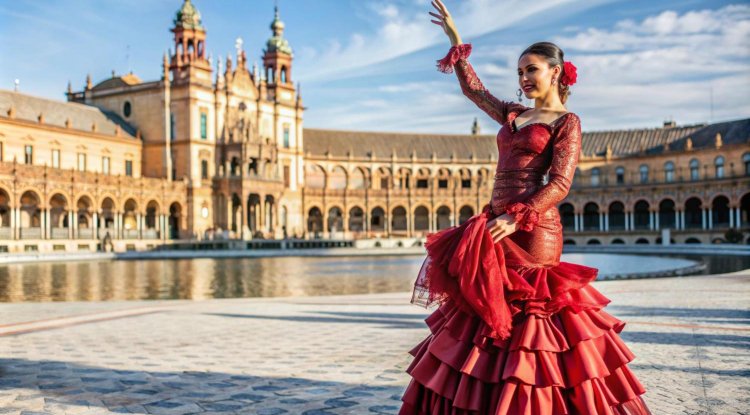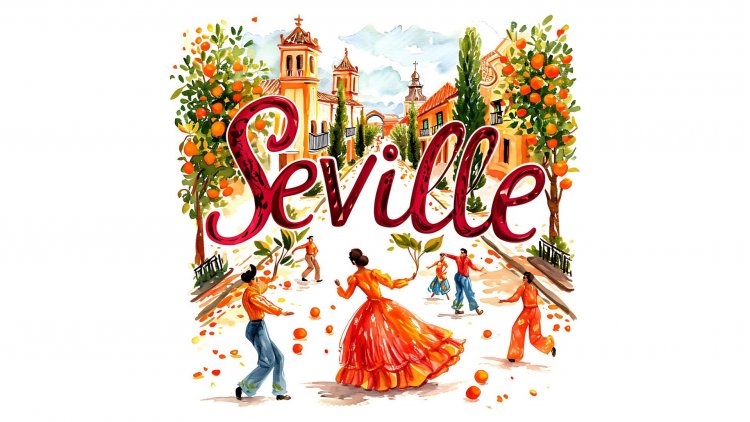Enchanting Seville: A Journey Through Andalusia's Hidden Treasures
Seville, the pulsating heart of Andalusia, has long captivated the imagination of travelers with its well-trodden landmarks: the grandiose Alcázar, the majestic Seville Cathedral, and the iconic Plaza de España. Yet, beyond the familiar splendor of these renowned sites lies a tapestry of lesser-known marvels, each brimming with its own unique charm and history. For those seeking to delve deeper into Seville's magical essence, this journey uncovers the city’s hidden gems, offering a fresh perspective on Andalusia's rich cultural heritage.
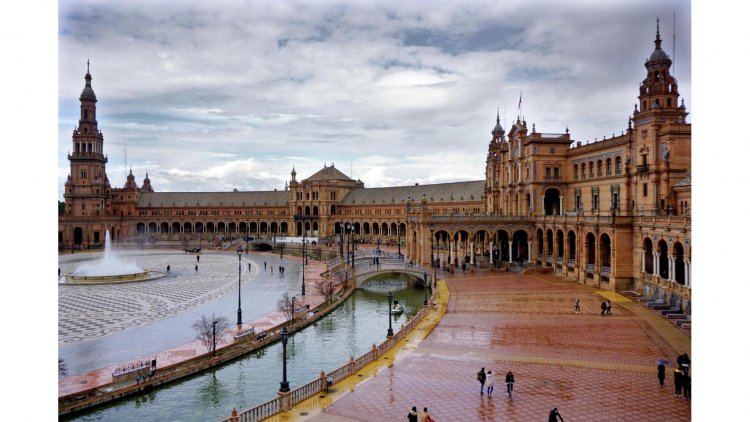
The Allure of Barrio Santa Cruz
In the labyrinthine streets of Barrio Santa Cruz, history and romance intertwine seamlessly. Originally the Jewish quarter of Seville, this neighborhood exudes a charm that seems almost unchanged by time. Narrow, winding streets are flanked by whitewashed buildings adorned with vibrant flower pots. Here, the allure lies not only in the picturesque alleyways but also in the fascinating tales that echo through the cobblestone pathways.
One cannot miss a visit to the Casa de Pilatos, a lesser-known yet stunning example of Andalusian architecture. This grand residence, blending Italian Renaissance and Moorish styles, offers an intimate glimpse into the opulent lifestyle of the Seville aristocracy. Wander through its beautifully tiled courtyards and lush gardens, and you’ll discover a tranquil oasis amidst the bustling city.
For those interested in local folklore, the Barrio Santa Cruz is also home to the Hospital de los Venerables, an exquisite baroque building with a storied past. Originally constructed as a home for retired priests, this now serves as a cultural center and art gallery, hosting exhibitions that celebrate the region’s artistic heritage.
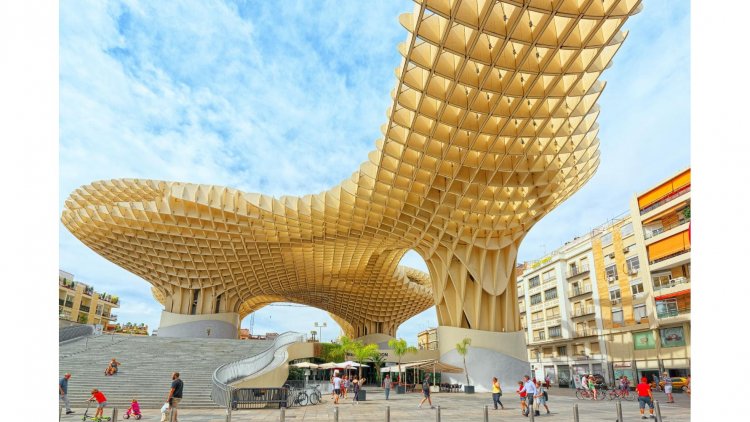
The Enigmatic Metropol Parasol
Often overshadowed by historical landmarks, the Metropol Parasol stands out as a contemporary marvel in Seville. Locally known as “Las Setas” (The Mushrooms), this colossal wooden structure dominates La Encarnación square with its striking, honeycombed design. Conceived by architect Jürgen Mayer, the Metropol Parasol has become a symbol of modern Seville, harmoniously blending avant-garde architecture with traditional surroundings.
Climbing to the top of the structure, visitors are rewarded with panoramic views of the city. The elevated walkway offers a bird’s-eye perspective of Seville's old town, and on clear days, you can see the distant outlines of the Sierra de las Nieves. Below, the structure’s shaded plaza is a vibrant hub, featuring a lively market and various eateries that reflect Seville’s culinary diversity.
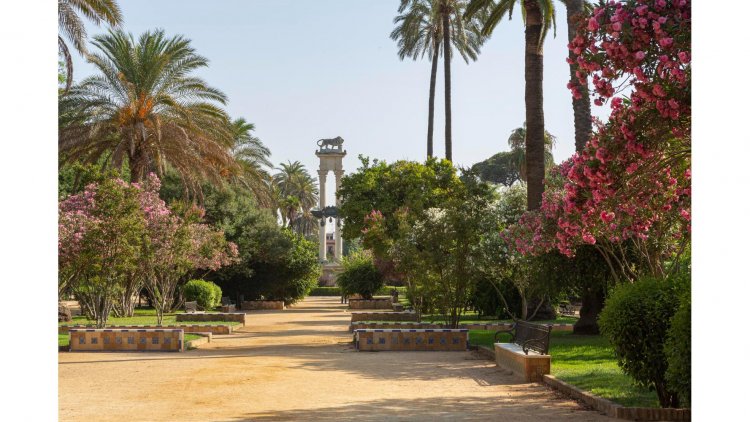
The Mystical Gardens of Murillo
Adjacent to the Barrio Santa Cruz, the Gardens of Murillo are a serene escape from the city’s hustle and bustle. Named after the famous painter Bartolomé Esteban Murillo, these gardens offer a peaceful retreat with their shaded walkways, ornate fountains, and well-manicured lawns. The gardens are a testament to Seville’s love for beauty and tranquility, providing a perfect spot for contemplation or a leisurely stroll.
A noteworthy feature of the Gardens of Murillo is its collection of historical monuments and sculptures that dot the landscape. Among them is the Monument to the Immaculate Conception, an emblem of the city’s deep religious roots. The gardens are also an excellent vantage point for enjoying the architectural splendor of the nearby Alcázar.
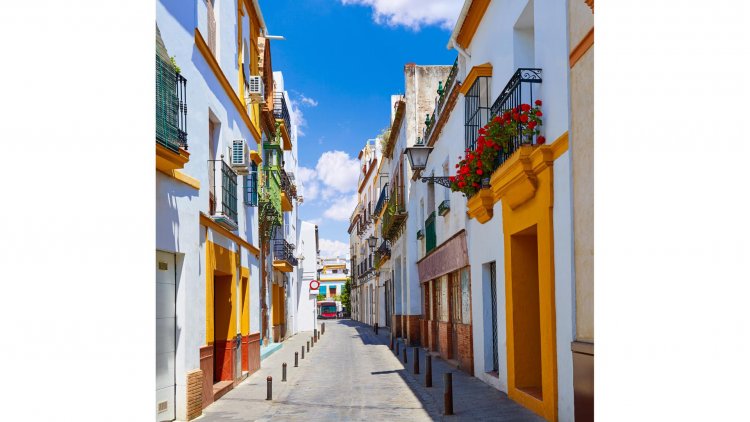
The Intriguing Triana District
Crossing the Guadalquivir River, you enter the vibrant district of Triana, an area renowned for its rich cultural and artistic heritage. Triana has historically been the birthplace of many of Seville’s most celebrated flamenco artists, and its narrow streets are steeped in the rhythm and soul of this passionate art form.
The district is also famous for its traditional ceramics. The Museo de Cerámica de Triana showcases the intricate craftsmanship of local artisans, with exhibits that highlight the history and techniques of Triana’s ceramic production. This museum offers a fascinating insight into a craft that has been a part of Seville’s identity for centuries.
Triana’s lively market, Mercado de Triana, is a sensory feast, where you can sample local delicacies, fresh produce, and artisanal goods. The market’s vibrant atmosphere reflects the district’s character and provides a taste of authentic Seville life.
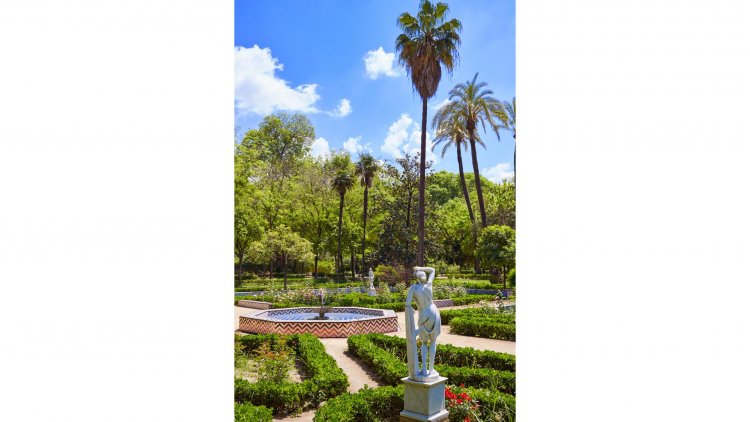
The Hidden Gem of Parque de María Luisa
While the Plaza de España within the Parque de María Luisa is widely admired, the entire park offers more than just this iconic attraction. The park’s expansive grounds are dotted with charming pavilions, tranquil ponds, and picturesque walking paths. Originally designed for the Ibero-American Exposition of 1929, the park is a testament to Seville’s commitment to preserving natural beauty amid urban development.
Among the park’s treasures is the Plaza de América, featuring a collection of stunning pavilions inspired by various Spanish architectural styles. The Mudejar Pavilion, with its intricate tilework and elegant arches, stands out as a highlight. Visitors can also explore the lush gardens, which are home to a variety of flora, providing a refreshing respite from the city's heat.
The Quirky Museo del Baile Flamenco
For an immersive dive into Seville’s flamenco scene, the Museo del Baile Flamenco offers an engaging experience. Founded by renowned flamenco dancer Cristina Hoyos, this museum goes beyond traditional exhibitions to provide interactive shows and workshops. Visitors can witness live performances, participate in dance lessons, and gain a deeper understanding of flamenco’s cultural significance.
The museum’s exhibits cover the history of flamenco, showcasing its evolution from folk roots to its current status as an international art form. The interactive nature of the museum ensures that even those new to flamenco will leave with a profound appreciation for this dynamic dance style.
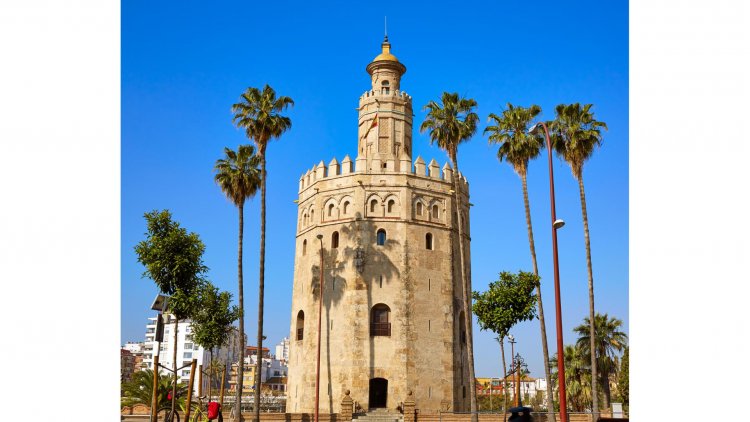
The Enigmatic Torre del Oro
Rising majestically on the banks of the Guadalquivir River, the Torre del Oro (Golden Tower) is another Seville landmark that often takes a backseat to its more famous counterparts. Originally constructed as a military watchtower in the 13th century, it now houses a maritime museum that explores Seville’s historical role as a key port in Spain’s Age of Discovery.
The tower’s name, derived from the golden hue of its reflective tiles, hints at its historical significance as a symbol of Seville’s wealth and power. Climbing to the top of the Torre del Oro offers stunning views of the river and the city, making it a worthwhile detour for those interested in Seville’s maritime heritage.
The Vibrant La Alameda de Hércules
La Alameda de Hércules is a lively square that is often overshadowed by Seville’s more traditional sites. This area has transformed into a cultural hotspot, brimming with trendy bars, eclectic shops, and a vibrant nightlife scene. The square is also home to several historical monuments, including the impressive statues of Hercules and Julius Caesar, which add a touch of historical grandeur to the modern vibrancy.
The atmosphere of La Alameda de Hércules is a reflection of Seville’s evolving cultural landscape. Whether you’re interested in enjoying a night out, exploring independent boutiques, or simply soaking up the lively ambiance, this area offers a dynamic experience that captures the spirit of contemporary Seville.
The Allure of the Lesser-Known Barrios
The Charms of La Macarena
While many visitors flock to the historic center of Seville, La Macarena offers a more intimate glimpse into local life. Known for its vibrant street life and cultural traditions, La Macarena is home to some of Seville’s most beloved local festivals and traditions.
The Basilica de la Macarena, located in this barrio, is a revered site for locals, housing the revered statue of the Virgin of Macarena. This statue is central to the Semana Santa (Holy Week) processions, which are among the most important events in Seville's religious calendar. The basilica itself is a masterpiece of baroque architecture, with intricate details that reflect the city's deep-rooted religious fervor.
Nearby, the Hospital de las Cinco Llagas, a historic hospital now housing the Seville Parliament, is a significant landmark. This impressive building, constructed in the 16th century, boasts a stunning façade and is a testament to Seville's rich architectural heritage.
The Artistic Vibe of El Arenal
El Arenal, located along the Guadalquivir River, is a district steeped in maritime history and contemporary culture. Historically a bustling port area, El Arenal has evolved into a trendy neighborhood that blends its maritime past with modern flair.
One of the key highlights of El Arenal is the Teatro de la Maestranza, an opera house renowned for its excellent acoustics and diverse programming. The theater hosts a variety of performances, from classical operas to modern ballet, making it a cultural hub for both locals and visitors.
For art enthusiasts, El Arenal is also home to the Centro Andaluz de Arte Contemporáneo. This contemporary art center, housed in a former monastery, offers a dynamic exhibition space that showcases both local and international artists. Its exhibitions are known for pushing boundaries and providing fresh perspectives on contemporary art.
The Enchanting Plaza de Doña Elvira
Nestled in the heart of Barrio Santa Cruz, Plaza de Doña Elvira is a quaint and picturesque square often missed by tourists. This charming plaza is surrounded by traditional Andalusian architecture, including the iconic whitewashed houses with colorful flower pots hanging from their balconies.
The plaza is named after a fictional character from the works of renowned Spanish author Tirso de Molina. It is said that the square captures the essence of Seville’s historic charm and serves as a peaceful retreat from the city’s bustling streets. The central fountain and the surrounding cafes make it an ideal spot for relaxation and people-watching.
The Unforgettable Ronda de Triana
The Ronda de Triana, a circular road that encircles the Triana district, offers stunning views of Seville’s skyline and the Guadalquivir River. This picturesque route is perfect for a leisurely walk or bike ride, providing an opportunity to appreciate the city’s diverse architectural styles and scenic beauty.
Along the Ronda, you’ll find several notable landmarks, including the Puente de Isabel II, also known as the Triana Bridge. This 19th-century bridge is an engineering marvel and offers fantastic views of the river and the city. The Ronda de Triana also features several scenic spots perfect for capturing Seville’s sunset and experiencing the city's natural beauty.
The Hidden Wonders of Jardines de los Reales Alcázares
While the Alcázar itself is a major attraction, the surrounding Jardines de los Reales Alcázares often receive less attention but are equally mesmerizing. These gardens, meticulously designed in various styles including Moorish, Renaissance, and Baroque, offer a serene escape from the city's hustle.
The gardens feature lush greenery, tranquil pools, and ornamental fountains that provide a peaceful retreat. Each section of the gardens reveals a different facet of Seville’s horticultural history and design influences. Walking through the gardens, visitors can explore hidden alcoves and secluded spots that offer moments of quiet reflection and beauty.
The Lesser-Known Seville Museums
Museo de Bellas Artes
Beyond the more prominent museums, Seville is home to the Museo de Bellas Artes, a lesser-known gem that houses one of Spain’s most important art collections. Located in a former convent, this museum features an impressive array of works from Spanish Renaissance and Baroque artists, including masterpieces by Murillo, Velázquez, and Zurbarán.
The museum’s collection spans several centuries and offers a comprehensive look at the evolution of Spanish art. Its serene setting and carefully curated exhibits provide a more intimate and focused art experience compared to the larger, more crowded museums.
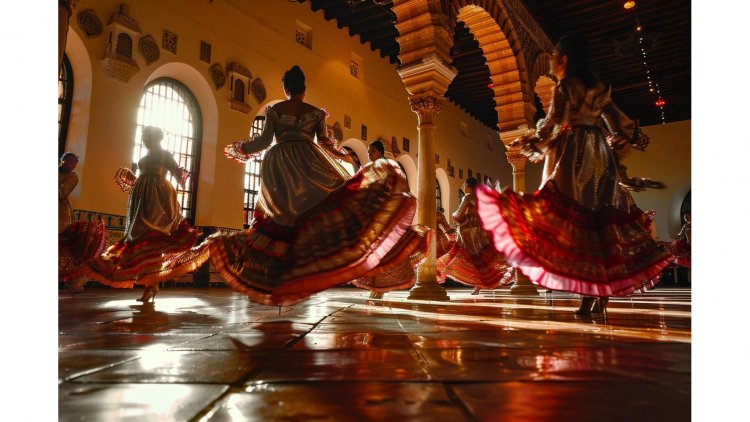
Museo del Flamenco
Flamenco is deeply embedded in Seville’s cultural fabric, and the Museo del Flamenco provides a dedicated space to explore this art form’s history and evolution. The museum’s exhibits include interactive displays, historical artifacts, and multimedia presentations that offer a deep dive into flamenco’s roots and its role in Seville’s cultural landscape.
Visitors can also enjoy live flamenco performances, which are integral to the museum’s mission of preserving and promoting this vibrant dance and music tradition. The museum offers workshops and educational programs that allow visitors to engage with flamenco on a personal level.
The Riverside Charm of Paseo de las Delicias
The Paseo de las Delicias, a scenic promenade along the Guadalquivir River, is an ideal spot for leisurely strolls and enjoying the river's tranquil ambiance. This less-visited area offers a different perspective of Seville, away from the tourist crowds.
The promenade is lined with lush greenery and features several picturesque viewpoints where visitors can relax and take in the river’s gentle flow. Along the way, you'll find charming cafes and restaurants where you can enjoy a meal with a view of the water.
The Secluded Charms of Parque del Alamillo
For those seeking a more secluded and natural retreat, the Parque del Alamillo offers a spacious green area located slightly outside the city center. This large park is a popular spot for locals, featuring walking trails, picnic areas, and sports facilities.
The park’s wide-open spaces and diverse plant life create a refreshing escape from the urban environment. It’s an excellent location for outdoor activities or simply enjoying a peaceful day surrounded by nature.
Discovering Seville’s Culinary Delights
Seville’s culinary scene extends far beyond its renowned tapas bars. For a true taste of local cuisine, consider exploring the city’s lesser-known eateries and markets.
Mercado de la Encarnación
In addition to the Metropol Parasol, the Mercado de la Encarnación offers an authentic local market experience. This bustling market features a variety of fresh produce, local delicacies, and artisanal products. Sampling the diverse offerings here provides a genuine taste of Seville’s culinary culture.
Gastronomic Hidden Gems
For those seeking culinary adventures off the beaten path, Seville is home to several hidden gem restaurants and cafes that offer innovative takes on traditional Andalusian dishes. Exploring these lesser-known dining spots allows visitors to experience the city’s evolving food scene and discover new favorites.
Experiencing Seville’s Festivals and Traditions
Seville’s rich cultural calendar includes numerous festivals and traditions that provide an in-depth look at the city’s vibrant heritage.
Feria de Abril
The Feria de Abril, held annually in the spring, is a lively festival that showcases Seville’s vibrant culture. This week-long celebration features traditional music, dance, and cuisine, offering a festive atmosphere filled with color and excitement. The fairground is adorned with lively casetas (tents), where locals and visitors gather to enjoy tapas, flamenco, and lively conversations.
Semana Santa
Semana Santa, or Holy Week, is one of Seville’s most significant religious events. The city comes alive with elaborate processions, each featuring intricately decorated floats and religious statues. The processions wind through the streets, accompanied by solemn music and the devoted participation of locals.
Seville’s lesser-known marvels offer a rich and diverse tapestry of experiences, each revealing a unique facet of the city’s heritage and charm. From hidden architectural gems to vibrant cultural districts, these discoveries provide a deeper understanding of Seville beyond its famous landmarks. Whether you're exploring the tranquil gardens of Murillo or delving into the artistic vibrancy of El Arenal, Seville’s hidden treasures promise to enchant and inspire.
Disclaimer: The information provided in this article is for educational purposes only and should not be considered medical advice. If you have any health concerns or are experiencing symptoms, it is important to consult with a healthcare professional, such as a doctor or clinic, for proper diagnosis and treatment. Always seek the advice of your doctor or other qualified health provider
What's Your Reaction?







